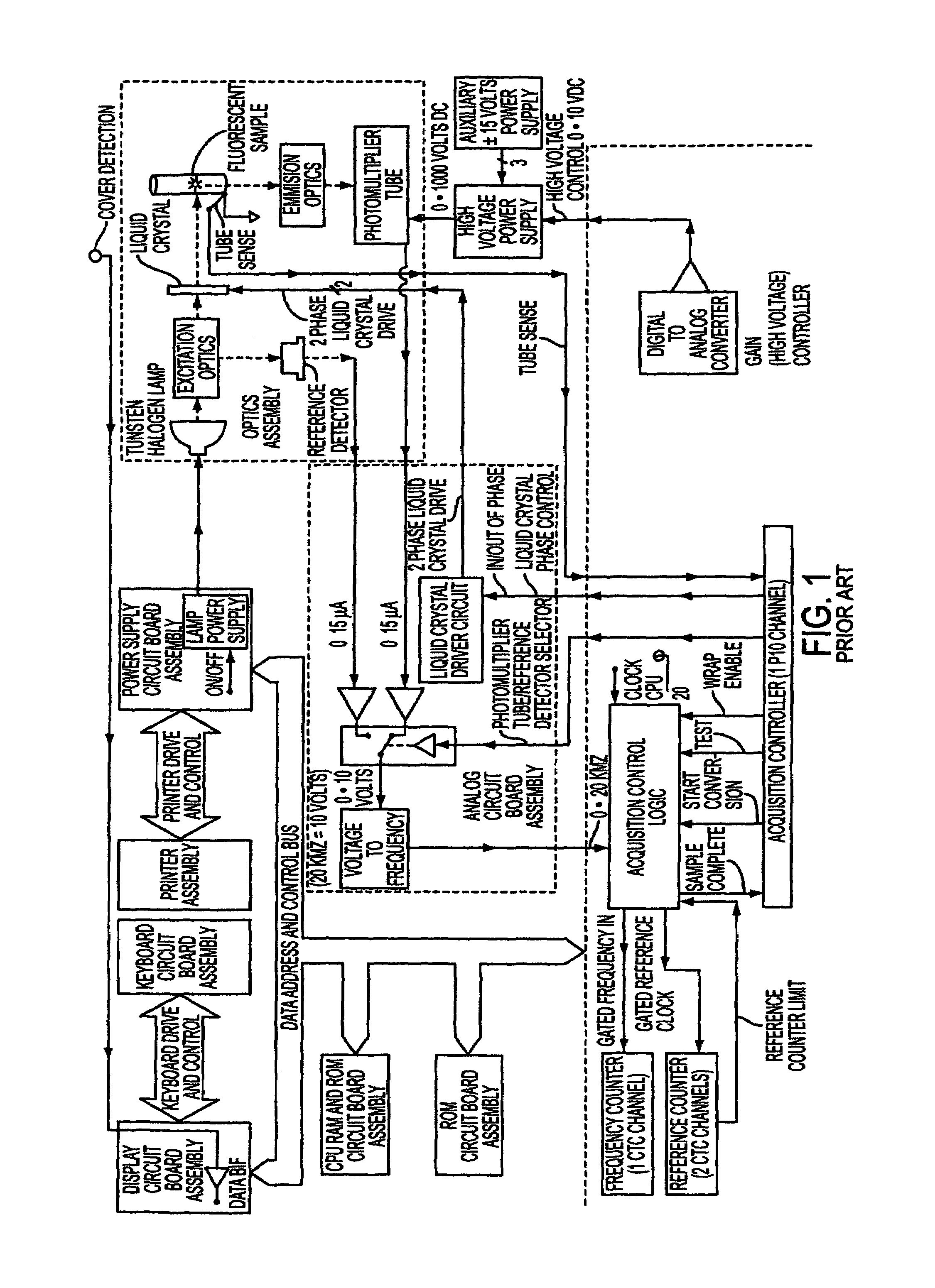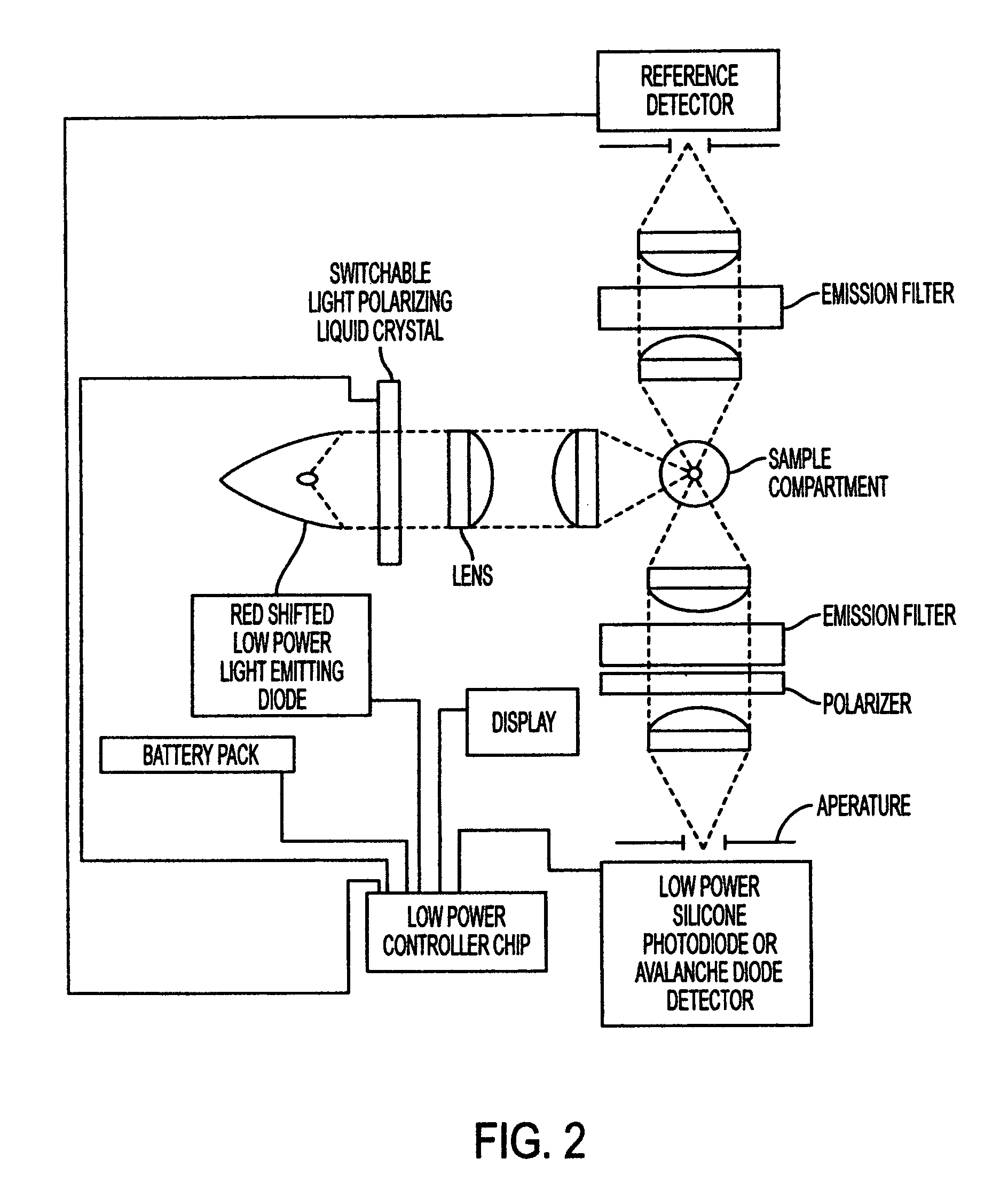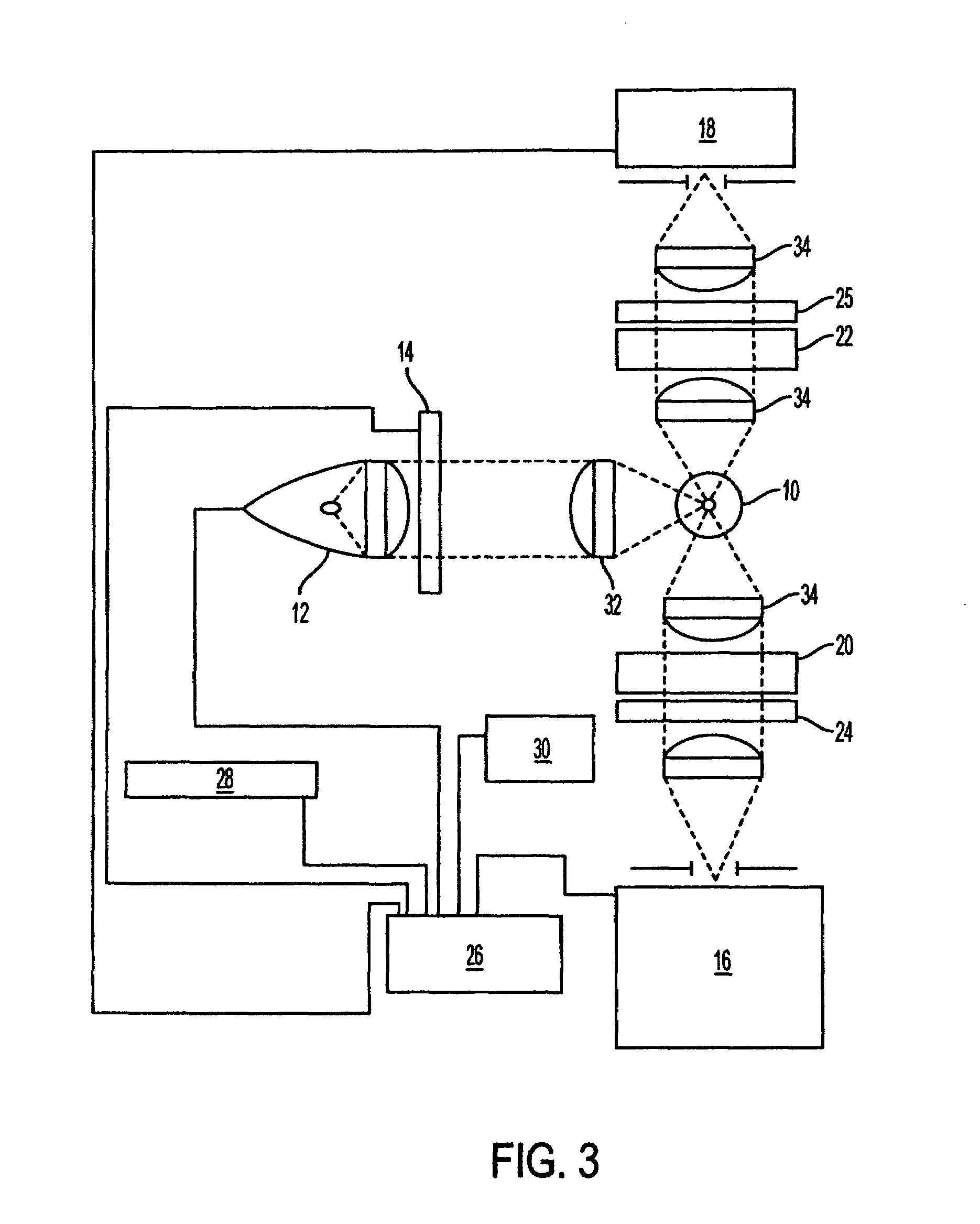Fluorescence polarization instruments and methods for detection of exposure to biological materials by fluorescence polarization immunoassay of saliva, oral or bodily fluids
a fluorescence polarization and immunoassay technology, applied in the direction of fluorescence/phosphorescence, instruments, optical radiation measurement, etc., can solve the problems of large current instruments, unaffected by use with non-homogeneous samples, and large bulky tabletop instruments with high voltage and power usag
- Summary
- Abstract
- Description
- Claims
- Application Information
AI Technical Summary
Benefits of technology
Problems solved by technology
Method used
Image
Examples
example 1
Fluorescence Polarization Assays in Saliva and Oral Fluids
[0160]The following example illustrates an exemplary fluorescence polarization assay in saliva or oral fluid, provided according to the present inventive subject matter.
[0161]In FP based assays, visible or ultraviolet light is polarized with a filter and shines on part of a molecule, the fluorochrome, that in turn fluoresces, emitting light of longer wavelength whose signal is captured and recorded. The emitted light recorded stays more polarized in solutions when there are slower turning, large molecule-fluorochrome complexes than when there are smaller labeled molecules. Different fluorochromes can be chosen to accommodate molecules of different sizes up to 107 kDa molecular weight.
[0162]In a direct binding assay, combining fluorescently labeled antigen or peptide with antibody results in an increase in FP, as measured in arbitrary millipolarization (hereinafter “mP”) units. This is illustrated in Table 3.
[0163]
TABLE 3Milli...
example 2
Fluorescent Polarization Assay for Tuberculosis Exposure
[0177]The following example illustrates an exemplary fluorescent polarization assay for tuberculosis exposure, provided according to the present inventive subject matter.
[0178]Vaccination for tuberculosis occurs in most of the world using Bacille Calmette-Guerin (hereinafter “BCG”) vaccine, with the exception of the United States. The TST used for tuberculosis screening requires two visits to the clinic 48-72 hours apart, the first for administration of the test material, and a second visit where the TST is read and recorded by a trained technician or medical professional.
[0179]For an exemplary rapid diagnostic screening for anthrax immunization status, an immune system stimulating part of the vaccine will be used to screen immunized individuals. In a preferred embodiment of this method, a small antigen, preferably less than 10,000 Da molecular weight, is labeled with a fluorescent dye while retaining its antigenic determinant....
example 3
Fluorescence Polarization Assay for Anthrax Vaccination
[0182]The following example illustrates an exemplary fluorescence polarization assay for anthrax vaccination, provided according to the present inventive subject matter.
[0183]Vaccination for anthrax occurs for all Department of Defense personnel deploying to at-risk areas of operation. The United States Armed Forces anthrax vaccination program currently uses the AVA vaccine. As a result, some subjects have greater than 750 micrograms / ml anti-AVA IgG per ml of serum after five or six subcutaneous doses of vaccine and a titer up to 1:4000 after three doses. Titers of this magnitude mean anti-AVA antibody can be detected in saliva. The serum anthrax enzyme-linked immunosorbant assay is the current gold standard diagnostic test, but requires a laboratory setting, trained personnel, specialized equipment, and up to 8 hours to quantitate the results.
[0184]Applicants have developed an FP assay for anthrax immunization which is straight...
PUM
| Property | Measurement | Unit |
|---|---|---|
| molecular weight | aaaaa | aaaaa |
| molecular weight | aaaaa | aaaaa |
| molecular weight | aaaaa | aaaaa |
Abstract
Description
Claims
Application Information
 Login to View More
Login to View More - R&D
- Intellectual Property
- Life Sciences
- Materials
- Tech Scout
- Unparalleled Data Quality
- Higher Quality Content
- 60% Fewer Hallucinations
Browse by: Latest US Patents, China's latest patents, Technical Efficacy Thesaurus, Application Domain, Technology Topic, Popular Technical Reports.
© 2025 PatSnap. All rights reserved.Legal|Privacy policy|Modern Slavery Act Transparency Statement|Sitemap|About US| Contact US: help@patsnap.com



